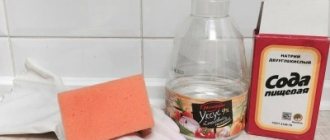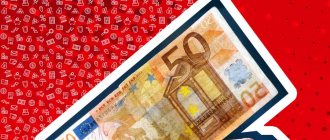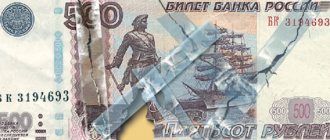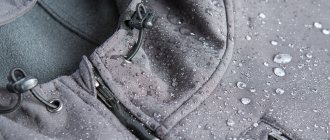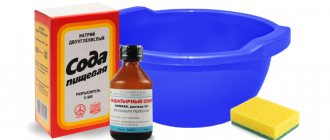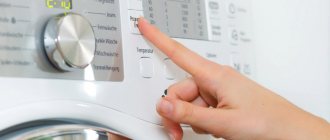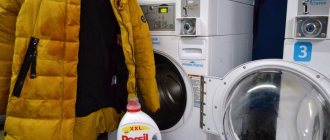Such a nuisance as money getting wet in a washing machine due to carelessness has probably happened to each of us at least once in our lives. Today, Gosznak banknotes are made from high-quality, fairly thick and durable paper. Accordingly, in most cases, Russian money tolerates a one-time wash relatively well.
However, of course, you need to start drying banknotes that have gotten wet in the washing machine as quickly as possible. At the same time, drying banknotes in order not to spoil them should, of course, be done correctly.
Air drying: choosing a location
If you notice that you made a mistake and did not check the pockets of your clothes before washing, remove the wet bills from the water as quickly as possible. Next, place the money on the edge of the sink or bathtub and wait until the water drains from it.
Transfer wet bills to a dry, well-ventilated area to dry. Place the money on a flat, horizontal surface, such as a table. Make sure that the bills cannot be blown into any gap, from which they will then be difficult to remove. Please note that as the banknotes dry, they will become increasingly lighter.
How to become a good influencer and start making money online
You should never take their word for it: how to work with sycophantic colleagues
Disarm with an honest compliment: how to respond to the envy of colleagues
How will washing affect their condition?
Most often, money that has suffered from mechanical stress when washing clothes does not lose its solvency.
What can happen to paper banknotes?
Washed banknotes naturally lose their original appearance after washing . However, they retain their payment status.
This is due to the use of special paper and special durable paint for their manufacture, which provide the money with sufficiently high strength.
Their usual appearance may change if:
- bleach was used for washing, which will cause the paint on paper bills to fade slightly;
- the washing powder contained chlorine or aggressive components to remove stains;
- clothes could fade, causing paper money to take on an unusual color.
The appearance of paper money remains virtually unchanged if it remains in your pocket during the washing process.
This eliminates the possibility of their deformation and transformation into torn fragments. Even in case of damage and rupture, serial numbers are retained , which allows you to restore the value of banknotes by contacting banking institutions.
What will happen to the coins?
Finding coins in the drum after washing is fraught with consequences not so much for metal money as for the washing machine.
Small items may damage the drum. Therefore, coins must be found and removed to avoid repeated negative impact on the inner lining of the drum.
It is recommended to do the following:
- Rotate the drum by hand, inspect and feel its inner surface.
- Check to see if coins are stuck in the rubber seal, that is, in the hatch cuff.
- Inspect the drain pump filter. It is located at the bottom of the machine body. This is a small panel equipped with a protective cover. You need to open it by scrolling counterclockwise and remove the coins, if there are any.
Metal money may be slightly deformed and nothing more. In addition, they will have an unpleasant odor.
Fan installation
Place a fan near your desk. Install this equipment at such a distance that the air flow it produces will not subsequently blow money off the table.
First, lay out several thick paper napkins on the table surface. Place the wet bills themselves on top of them. Carefully cover each banknote on top with another napkin. Turn on the fan at the lowest speed.
Air drying process
Wait a while and check the bills. If the wipes are heavily saturated with water, replace them with new ones. Next, turn the bills over to the other side up every half hour. This will allow you to dry evenly and ultimately get even, unwarped bills.
Practicing Gratitude and Generosity: Changing Your Money Mindset
Under the influence of other people: common mistakes when changing careers
How to Decorate Your Home Office: Adding Fashionable Accents
If you have time, use a hair dryer instead of a fan. In this case, also first place the bill on a napkin. Next, blow the banknote with a hairdryer, turning it over from time to time.
conclusions
If stores and terminals do not accept your banknotes because they are damaged or worn out, do not despair. Any Russian bank will replace a worn-out banknote absolutely free of charge, and the procedure in most cases will take just a few minutes.
You can apply for replacement Russian banknotes if more than half of the banknote has been preserved, the series, number and denomination are clearly legible. If there are doubts about the authenticity of the banknote, the bank will order an examination, and if the outcome is positive, it will make an exchange.
Helpful advice
Sometimes it happens that there is neither a fan nor a hairdryer at hand. In this case, simply place the bills on napkins, one at a time, on the table next to the window so that the money receives direct sunlight. Next, simply leave the banknotes to dry for a while.
Drying banknotes in the sun, of course, will take a little longer than using a hairdryer or fan. In any case, when using this technique, the drying procedure will most likely take at least 2-4 hours, depending on how much moisture the paper has managed to absorb.
Using an iron
This method is perfect for drying not too many bills. Ironing each banknote separately in this case will most likely not take too much time. To dry using this method, first lay the first bill on the ironing board and straighten it out well. Adjust the iron to minimum heat and plug it in. Check to see if the sole is too hot.
Gently iron the bill using forward/backward movements for several seconds. Turn the banknote over on the board and repeat the operation. Wait a while for the bill to cool and iron it again on both sides. Continue drying the note until all moisture has evaporated. It usually takes about 30-60 seconds to dry one bill. But if the banknote is very wet, it will most likely take a little longer to iron it.
Fun-loving people and more: types of friends who provoke unnecessary spending
Car lending in the Russian Federation increased in 2022 by 1.5 times compared to 2022
It is not the growth of the leader alone that will lead to success, but the strengthening of the entire team
Mold grows where it is humid and stuffy
Genuine and payment banknotes remain dark in ultraviolet light because they do not contain optical brightener. If a banknote glows under UV rays, it is either counterfeit or has been chemically damaged, for example, if it was washed with clothes and came into contact with laundry detergent.
An important nuance: if a cashier notices a glow on a banknote during check, he cannot say exactly what caused it. Mold is often just a “horror story” for customers. Yes, under certain conditions it affects money, but this is a normal phenomenon that should not be demonized, Olga Gapienko assures.
Important!
Drying banknotes with an iron usually takes quite a long time. You may be tempted to turn up the heat on the soleplate. Do not do this under any circumstances. Burning paper with an iron is actually very simple.
For the same reason, do not place the iron on a banknote to hold it there for a while. In this case, it will also be very easy to burn money. Be sure to move the iron back and forth while drying so that different parts of the bill are periodically exposed to you. This way you can control the situation.
If your iron gets too hot even on the lowest setting, iron the bills through a clean cloth. However, do not hold the iron over the banknote for a long time.
Replacing money
As already mentioned, banknotes can usually be washed without much harm to themselves. In addition, according to current legislation in Russia, stores are required to accept dried and even slightly damaged banknotes from customers.
But unfortunately, sometimes it happens that due to moisture, money becomes completely unusable. This can happen in a typewriter, for example, with an old bill. Also, the banknote will most likely be damaged if it remains in water for too long. In such a situation, the only way to solve the problem is, of course, to go to the bank to replace the banknote.
What banknotes will the bank not accept for exchange?
There are times when the bank will immediately refuse to issue new banknotes to replace damaged ones. There are only three of them:
- On the banknote there is the inscription “Sample”, and made in a typographical way. If this word is handwritten, it is not a reason for refusal.
- The banknote had been taken out of circulation by the time of the visit to the bank. For example, the exchange of denominated money ended in 2002, and it will no longer be possible to exchange banknotes of the 1995 model.
- The bill has lost more than 50% of its area. If the bill is torn, you can exchange only one - the larger half - or glue the pieces together.
What should be done
To exchange damaged money, go to the nearest branch of any bank. In addition to the banknote itself, take your passport with you.
It will most likely not be too difficult to exchange banknotes damaged by washing. In most cases, citizens are given new money immediately when they contact the bank at the cash desk of a specific branch.
At the bank, first of all, take the exchange application form from the employee and fill it out, indicating your personal data. Hand over the application, banknote and passport to the branch employee. After inspection, the specialist will most likely remove the damaged bill and give you a new one.
Does the store have the right to refuse to accept such a bill?
This happens quite often. Sometimes citizens receive banknotes that are so old or damaged that no store accepts them. What’s most interesting is that it’s usually small retail outlets that try to push damaged money away to customers upon delivery. So this kind of exchange of damaged bills takes place, they go around in a circle.
Only the law obliges stores to accept such money. There is an instruction from the Central Bank of the Russian Federation, which indicates which banknotes are valid and solvent, despite the presence of damage.
We are talking about the following types of damage:
- torn, with missing corners and edges (it is clear that this means that the damage did not affect the readability of the number, the loss of an edge is no more than a third);
- dirty, with extraneous inscriptions, with seal imprints;
- torn, pierced.
The seller has no right to refuse to accept a banknote with such damage. But the buyer can refuse to accept it as change.
So, in fact, the replacement of a damaged banknote can go through the store if the damages are those prescribed by the Central Bank. And it’s better to go with that kind of money to a large chain store, they won’t refuse to accept you. In the future, organizations themselves hand over the damaged banknotes to banks, exchanging them for normal ones.
What to do if the bank refuses to exchange money
If the banknote cannot be exchanged for one of the reasons stated above, the bank employee will return it to you with the appropriate note. In this case, try contacting another bank.
How to achieve a balance of work and rest and what you need to know about this phenomenon
Scarcity Mindset: Blind Faith in People's Success and Other Signs of Stinginess
Related goods at the checkout: what else “burns” money and how to get rid of it
If money is also not accepted at another branch, try writing a corresponding statement on the Central Bank website. Next, wait for an answer and do what the specialist advises you.
You may have to send the damaged bill for examination. In this case, first dry the banknote, then line it with napkins and only then place it in the convention.
Is it possible to exchange the currency of another country?
Most often, Russians have to dry their clothes after washing, of course, in our domestic rubles. However, of course, due to carelessness, you can wash dollars or, for example, euros in a machine. Foreign currency can be dried using the same methods as domestic currency. If desired, such money can be placed under a fan or ironed. But what to do if the dollar or euro was seriously damaged during washing?
Such a banknote can also be exchanged directly on the territory of Russia. However, unfortunately, not all banks exchange foreign currencies in our country. Therefore, if necessary, first look online for a branch that is guaranteed to provide such a service. In any case, when exchanging a banknote from another country, you will most likely have to pay a commission of 3-10% of its face value.
Found a violation? Report content

